Plate heat exchanger in chemical industries and Life Science
From basic chemicals, in typically large production volumes, through specialty chemicals to end products in reducing quantities, thermal processes play an important role in most manufacturing operations. Pure components, or mixtures, are heated or cooled, partially or fully evaporated or condensed. As large as the number of chemical products is, the relevant thermal processes may differ greatly in detail. If plate heat exchangers are integrated into reactors, then heat of reaction can be added or removed directly. In Biotech, or specialty chemical production plants, smaller volumes have to be heated up or cooled down, often in batches, with jacket cooling or heating of the process vessels with recirculation.
The following examples show the experience of GESMEX in these areas:
Steam heaters and process plants
Steam heaters in process plants heat products or water with steam. The heated products can be liquid or gaseous, one or two-phases. They can be heated or also partially or completely evaporated.
XPS - Plate & Shell heat exchangers have relatively short but wide transfer surfaces, and are therefore particularly suitable as steam condensers. For an optimal distribution of the heating medium, the plate pack can be positioned eccentrically in the shell. For large numbers of plates, maldistribution can be avoided by several inlet and outlet connections on the shell.
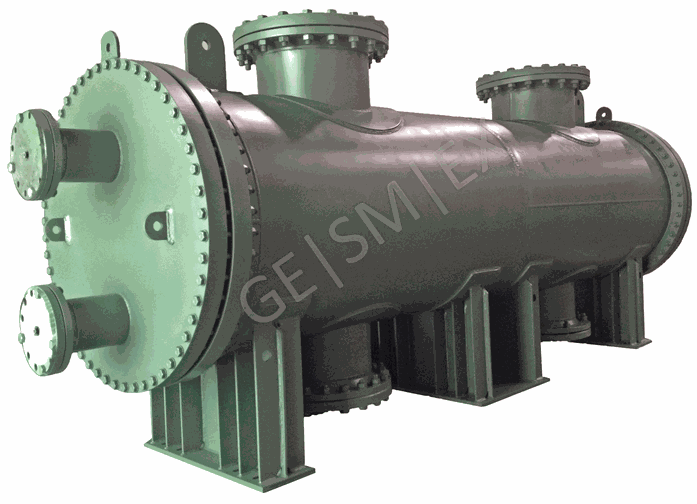
- Type:
- Plate & Shell, XPS 200
- Variant:
- both sides openable
- Features:
- 1000 m² transfer area, shell side two inlet and outlet connectors
- Installation site:
- Belgium
Circulation evaporators (Reboilers)
Circulation evaporators, also called reboilers, are used on distillation and stripping columns. For example in stripping processes, such as amine regeneration in Acid Gas Removal Units, and for the physical separation and purification of liquid products, crude oil fractionation. The liquid medium is fed counter-current to a vapor stream. At the bottom of the column a part of the liquid is vaporized again to increase the efficiency of the process, and thermally drive the separation.
XPS - Plate & Shell heat exchangers are used as circulation evaporators, predominantly in thermosiphon operation, i.e. they are installed next to the column and operated by natural circulation. Because of their high efficiency they require less heat transfer area compared to shell & tube heat exchangers. Thus the units are also lighter and smaller. Their response time is shorter due to the much lower liquid inventory, which lead to much shorter start-up times and faster control. This also give a much lower residence time, so thermal degration is greatly reduced. In addition to this, the required volumes of chemcials such as amines can be reduced saving operating costs.
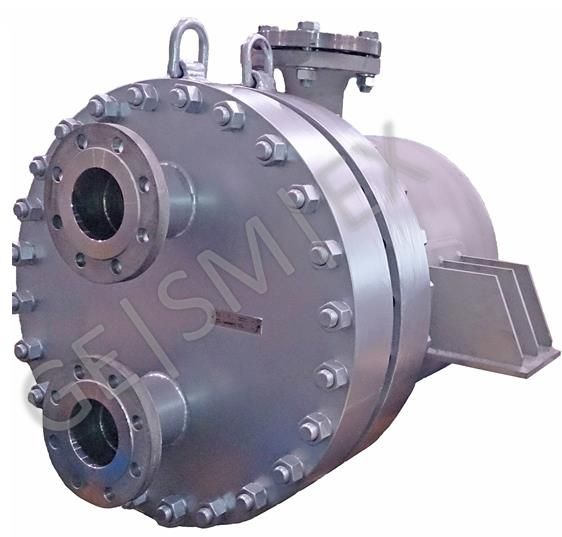
- Type:
- Plate & Shell, XPS 100
- Variant:
- openable for inspection and cleaning of the product side
- Installation site:
- Netherlands
Flasch condensers
Flash condensers in process plants condense the waste steam or remaining steam resulting from the thermal treatment of products, such as when a product is flash cooled, or pressure is dropped, these are called exhaust vapors. Condensation is reuired to recover valuable product and energy, and also to comply with emission limits. In most cases the condensation is at atmospheric pressures or under vacuum.
XPS - Plate & Shell heat exchangers are highly efficient condensers. Different physical properties of the media to be condensed lead to a variety of possible heat exchanger configurations. Larger nozzles are required to accommodate the high volumentric flow rates for vapour under vacuum. Inert gases can be removed with an integrated separator, as part of an oversizeed nozzle.

- Type:
- Plate & Shell, XPS 200
- Variant:
- fully welded, excentric shell
- Features:
- cross-flow, multi-pass at plate side, with a collector for phase separation and liquid collection
- Installation site:
- Germany
Gas coolers / partial condensers
In processes with partial condensation only part of the vapour is condensed, changing the composition of the product, or drying the product. The condensation amount depends on the composition of the medium, and is controlled by the mass flow, pressure, temperature and the thermal duty.
XPS - Plate & Shell heat exchangers are effective condensers and partial condensers. The heat exchagers can be sized so that individual media are fully or only partially condensed. The cylindrical shell construction allows internal separation of thermally separated streams.
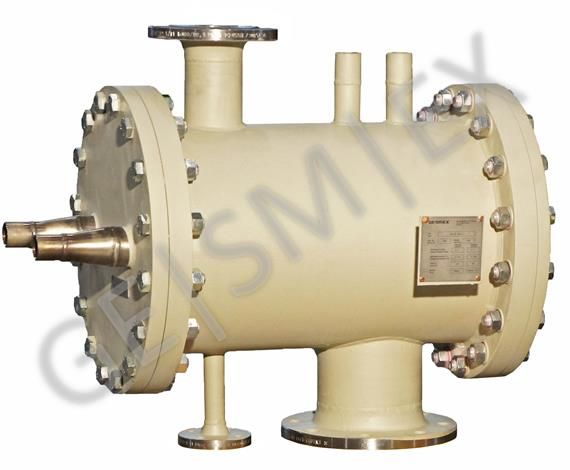
- Type:
- Plate & Shell, XPS 50
- Variant:
- openable on both sides
- Features:
- multi-pass on at shell side with separate nozzle for condensate return, cross-flow to the pressure loss minimization at vacuum operation
- Installation site:
- Germany
Liquid coolers
Liquid coolders in process plants cool products between or after processing stages. Water or heat transfer fluid are generally used as a utility.
XPS - Plate & Shell heat exchangers have high heat transfer rates which enable small designs. In addition to the small footprint, the units require much less material compared to other technologies such as shell & tube heat exchangers. This advantage is increased particularly when highly corrosion-resistant materials are required.
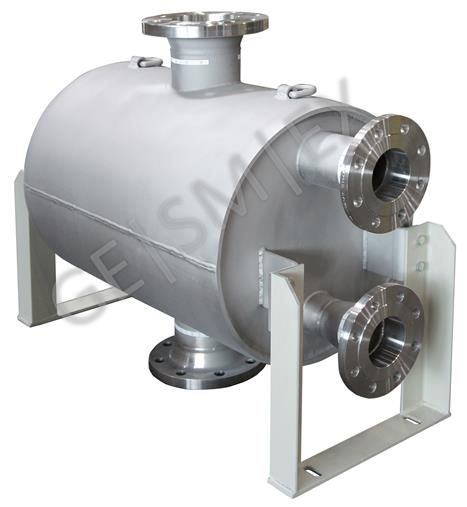
- Type:
- Plate & Shell, XPS 100
- Variant:
- fully welded, single pass at shell side
- Features:
- plate material 1.4539 (904L) for increased corrosion resistance to chloride-containing media
- Installation site:
- Germany
Evaporators
Evaporation in process plants is required, when a solvent needs to be removed from a solute, typically concentrating a product or recovering a solvent. A vaporizer is when the latent heat is required in a subsequent process, such as making clean steam for pharmacuetical applicaitons.
XPS - Plate & Shell heat exchanger can be flexibly adapted to the requirements of different operating conditions. For example the volume for steam evaporation can be enlarged by increasing the shell diameter, or by an eccentric arrangement of the plate pack in the shell. A multi-pass flow guidance is also possible for evaporation duties, when the heat exchanger is installed in an upright position so that the steam exit can be vertical.
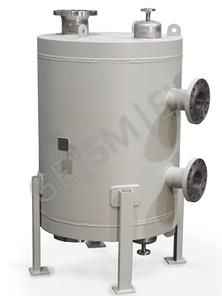
- Type:
- Plate & Shell, XPS 200
- Variant:
- fully welded, multi pass
- Features:
- vertical orientation for partial evaporation at plate side and partial condensation at shell side
- Installation site:
- Finland
Preheater / Economiser
An effective way of preheating products is recovering heat from a process fluid that needs cooling. A good example of this is combining a cold reactor feed that needs to be heated, and the hot reactor product that needs to be cooled in one heat exchanger, to elminate utilities. Heat exchangers with such process tasks are also called economizers or feed / effluent - heat exchangers.
XPS - Plate & Shell heat exchangers are capable of close temperature approaches, and thus a high heat recovery becomes possible. This is achieved through a long thermal length with a multi-pass arrangement. If the volume flows on both sides are approximately the same, then the heat exchangers are configured with an equal number of passes on both sides. Crossing temperature programs are possible, i.e. to heat up the cold medium to a temperature above the outlet temperature on the hot side.
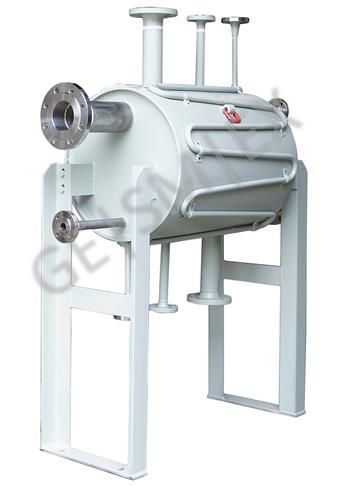
- Type:
- Plate & Shell, XPS 100
- Variant:
- fully welded, multi-pass on both sides
- Features:
- with shell jacket heating to heat up and liquify the medium in the start-up operation
- Installation site:
- Germany
Gas heater
Gas heaters are usually operated with steam or liquid heating media such as thermal oil. Liquid heating media lead to highly asymmetric flow rates, i.e. the gas-side flow is multiple higher than the heating medium flow.
XPS - Plate & Shell heat exchangers can be configured with large nozzles on the shell side, coping with large volumetric gas flows. After determinating the required heat transfer area, the allowable pressure drop is the next determining factor. To optimize between heat exchanger size and pressure loss, plates with different corrugations and pressing depths are available.
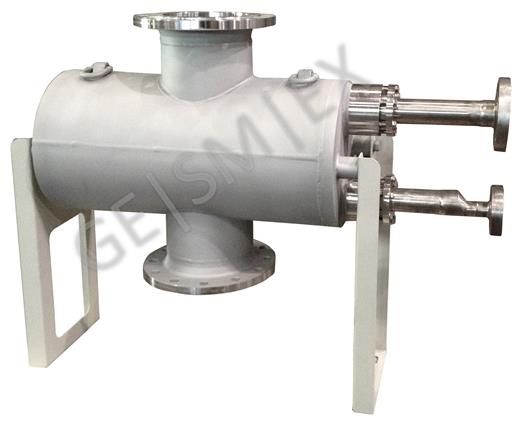
- Type:
- Plate & Shell, XPS 50
- Variant:
- fully welded
- Features:
- heating steam plate side, plate material:titanium
- Installation site:
- Netherlands
Reactors
In process plants heat exchangers and reactors are usually separate unit operations. Depending on whether it is an endothermic or exothermic reaction, either pre-heating is or product cooling is required. In certain processes, a combination of heat exchanger and reactor in one unit is advantageous. This is realized by the arrangement of the heating or cooling surfaces in the reactor, whereby the heat transfer with the reaction can take place more directly.
With XPT - Thermoplate heat exchangers construction of reactors can be realized in a very flexible way. The Thermoplates can be individually manufactured in various shapes and sizes and the reactors can be built up modular. When positioning the plates and sizing the proces vessel, sufficient space is required to pack in catalysts which supports chemical reactions. Finally also the jacket of the process vessel can be equipped with heating or cooling surfaces in Pillow Plate - form.
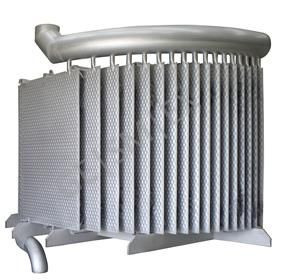
- Type:
- Thermoplate, XPT
- Features:
- for direct installation in a process tank
- Installation site:
- China
Heat recovery in process plants
In process plants individual steps of production often requires the cooling of products. This “waste heat”can be put into the atmosphere via a cooling tower, or recovered and used elsewhere in the plant, where lower grade heat is required. Therefore saving both cooling and heating requirments.
XPS - Plate & Shell heat exchangers transfer heat from liquid or gaseous products to other products, or into auxiliary systems. The efficient countercurrent flow of the XPS means that more energy can be better recovered than with other technologies. If the energy level high enough, valuble low-pressure steam can be generated from the waste heat.
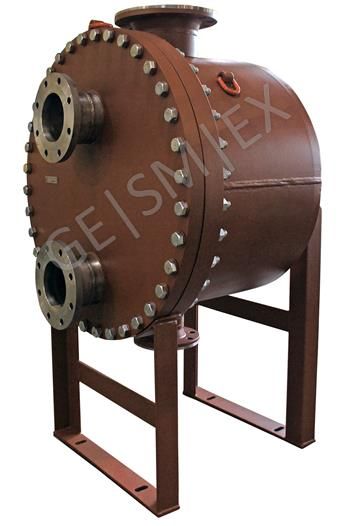
- Type:
- Plate & Shell, XPS 150
- Variant:
- openable shell
- Features:
- plate material 1.4591 (Nicrofer 3033) to ensure the corrosion resistance to hot sulfuric acid
- Installation site:
- Sweden
Heat exchangers in utility systems and for heat recovery
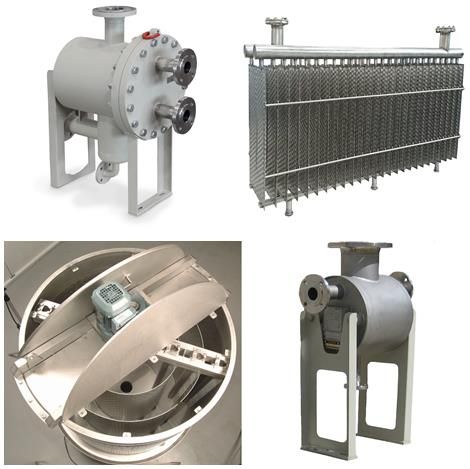
In addition to process-specific tasks, GESMEX plate heat exchangers are also used in numerous auxiliary and utility systems, such as: heating of cleaning solutions, cooling lubricant oil, drying copmressed air, jacket cooling, ...
GESMEX plate heat exchangers are used for heat recovery from exhausst vapors or flash steam, in sewage systems, for heat recovery or power generation from waste gases ...
